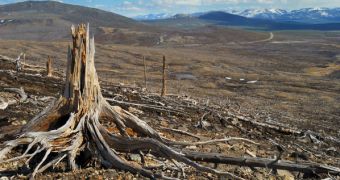A new study published in yesterday's issue of the journal Science documents how the world's forest coverage transformed between the years 2000 – 2012.
Not to beat about the bush (seeing how there aren't all that many of them left and we would not want to disturb the ones we still have), it appears that, within said time frame, about 2.3 million square kilometers of forests (888,000 square miles) were destroyed.
Folks working with the US Geological Survey explain that this area is roughly the equivalent of the US states located east of the Mississippi River.
By the looks of it, most of the forest loss that occurred worldwide between 2000 – 2012 was recorded in Russia. Brazil, the United States, Canada and Indonesia follow shortly after.
As far as deforestation rates are concerned, Indonesia was the definite winner. Thus, it appears that annual forest loss in this part of the world in 2011 – 2012 was twice as great as the one documented between 2000 – 2003.
The good news is that, during the period taken into consideration for this study, the world also managed to regrow some patches of forest.
Their combined surface amounts to 800,000 square kilometers (309,000 square miles), which is about the area of Texas and Louisiana taken together.
In order to study the changes that have taken place in the world's forest coverage between 2000 – 2012, researchers used information provided by the Landsat 7 satellite to piece together a high definition map, made available to you below this article.
According to the US Geological Survey, the images used were taken at a 30-meter (98.5 feet) resolution. The Google Earth Engine team was also involved in the project.
“Tracking changes in the world's forests is critical because forests have direct impacts on local and national economies, on climate and local weather, and on wildlife and clean water.”
“This fresh view of recent changes in the world’s forests is thorough, objective, visually compelling, and vitally important,” Anne Castle, assistant secretary of the Interior for Water and Science, commented on the importance of this project.

 14 DAY TRIAL //
14 DAY TRIAL //